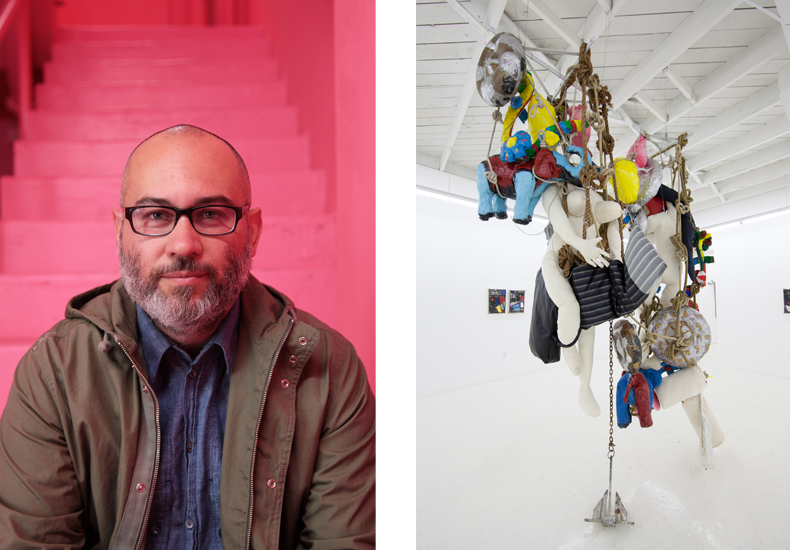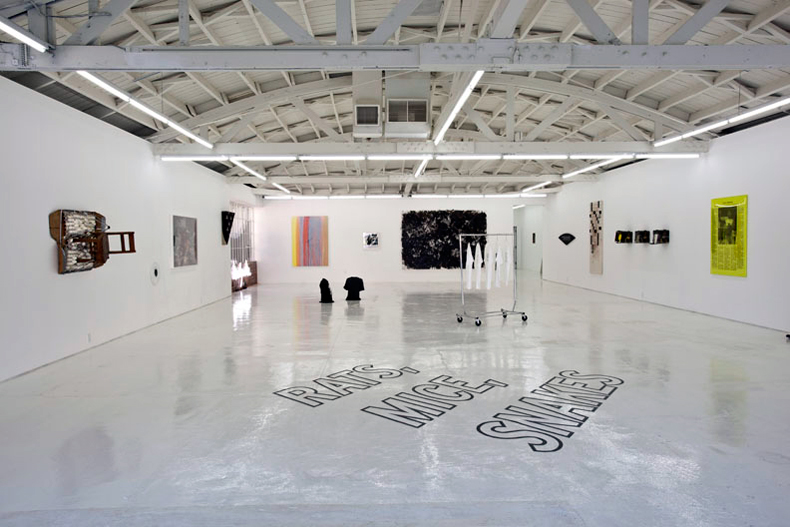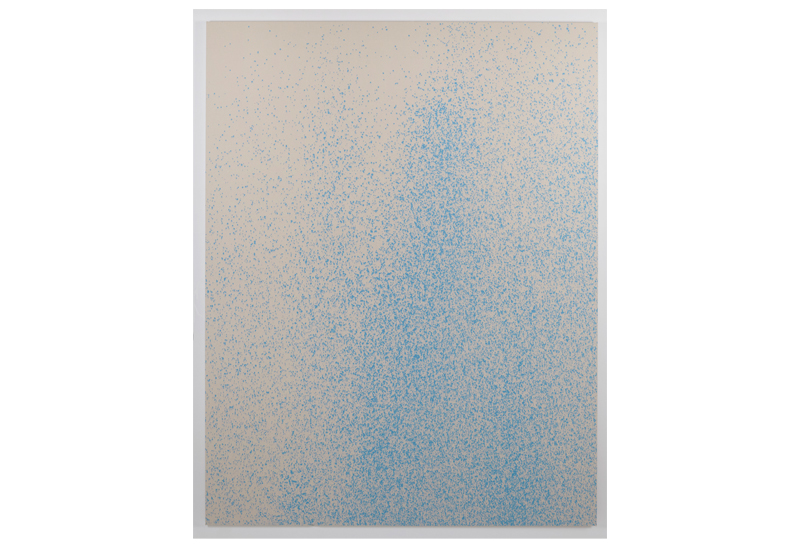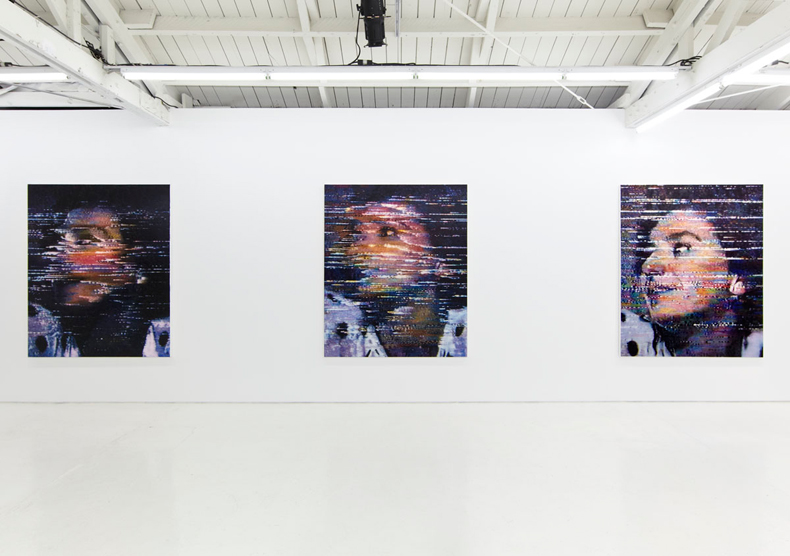Nov 26, 2012 8 Questions With Al Moran
In 2007, Al Moran was burned out after a decade in the printing game, and future business partner Aaron Bondaroff was looking for new avenues to explore too. The two put their heads together, leveraged their impressive mutual networks, and created a space called OHWOW. Initially, it was just that; a platform, a creative space. Over the next few years this project solidified into one of LA’s most talked-about galleries, one which aims to take a temperature reading on what Al feels is the most relevant work being made today. Highlights so far include exhibiting the likes of Lucien Smith (his first solo show, no less), and signing artists of George Herms’ caliber. Upcoming plans for the new year include solo exhibits from Michael Genovese and sculptor Nick van Woert, and more books. You can check out the OHWOW Book Club in New York. In the meantime, Al and the OHWOW team will unveil IT AIN’T FAIR 2012, the fifth installment of an annual group show which coincides with Art Basel Miami. The opening reception is on December 6th, from 6-9pm.

Left: Portrait of Al Moran. Photography by Mark Quetgles
Right: Agathe Snow. “Oh, Sandy!”, 2012. Courtesy of the artist and OHWOW
What are you currently working on?
Right now, I’m working on a few projects. Agathe Snow created a new body of work for her first solo exhibition with OHWOW, Tout Dit (2D), currently up at the Los Angeles gallery through December 8th. I’m also in the final stages of preparation for our annual exhibition titled It Ain’t Fair that coincides with Art Basel Miami Beach. It Ain’t Fair 2012 will be open December 6–9th in a 6,000 sq ft. space on the beach with over thirty artists. It’s my fifth and final year doing this exhibition, and my whole team has worked extremely hard to make it an unforgettable one. I’m also finalizing preparations for a book release event for a book I just published for Terry Richardson, Terrywood. We’re also putting the finishing touches on a book for Michael Genovese, whose solo exhibition will open at the Los Angeles in early January.
How would you describe your job?
I provide a platform for artists to realize their ideas, and I work with collectors to help build collections that reflect the art of our times.
What does your average work day look like?
I spend the mornings returning emails and communicating with my team. Being on PST, I usually focus on my East Coast obligations and studios early on just so I don’t lose a day with them. Afternoons are usually spent dealing with local collectors and taking meetings in or near the gallery. I usually end my day getting up to speed on any miscellaneous projects we’re working on such as books or special projects. My weeks are pretty fluid. They tend to go wherever my interests take me. I’m extremely fortunate to be in a position where I’m not reacting to things but rather putting things in motion. I’m also making a serious effort to get back in that habit of getting on phone calls. I feel like I’ve become over-reliant on emails and texting. Whenever possible, I like set calls or meet face-to-face. It makes for a much higher level of communication and aids in the creative process.
Where do you find inspiration?
I am surrounded by so many creative people in my life that it’s virtually impossible not to be inspired by my relationships with artists. I have very deep friendships with the artists I work with. Every single thing we do at OHWOW is done for them. They’re our toughest critics. If they respect what we’re doing, I feel that the rest of the world falls in line. That’s where I find my day-to-day inspiration on a micro-level.
On a macro-level, I very inspired by the history of Postwar art, specifically by the galleries that really changed the way art was looked at and spoken about. I’m obsessed with the history of Leo Castelli and his gallery, as well as with Ferus Gallery. Both of those galleries played instrumental roles in the development of Contemporary art. In their own way, both galleries changed art for the better and made an impact beyond the art world, touching on culture at-large. What Castelli, Blum and Hopps did is certainly inspirational––an impetus do things that are relevant and create a notch on the historical timeline.
As a kid, what did you want to be when you grow up?
I was all over the place. It’s actually one of my weaknesses to date. I tend to allow myself to get pulled in different directions all the time. I think that’s why I’m so comfortable with OHWOW. Every artist I work with feels likes it’s something new and different. There’s absolutely no monotony in what I do. Every exhibition, every book, every project has its own pulse and its own set of challenges. This keeps it interesting for me.
What are you reading at the moment?
Right now I’m re-reading Air Guitar and The Invisible Dragon, both by Dave Hickey. Hickey is writing an essay for a book on one of OHWOW’s artists, George Herms.
What’s the best thing about living & working in LA?
I think the city allows you to take from it whatever you need––at any particular moment. That’s the beauty of it. If you want to take ten meetings a day and have two lunches with two sets of people you can do it. If you want to retreat into a quiet space and be inside your head for a few days, you can do that as well. LA allows one to set his/her own pace. Living in Los Angeles has allowed me to strike a balance in my work and family life. I think both are better off for it.
What’s your favorite post-work destination?
My favorite thing to do post-work is to come home to my wife, Carla, and my two children. They’re all so supportive of OHWOW and me. This is a big reason for our success. I also like spending time at Chateau Marmont. Their staff has been so supportive of the gallery, since we moved to LA, and it feels a little like home when I’m there. It’s my go-to spot.





